Serenay Elmas
M.Sc. Architect
Ph.D. candidate in Structures and Architecture
Aalto University
serenay.elmas @aalto.fi
Highlight Legend
@@@Baukultur@@@
iiCraft/Craftsmanshipii
@@(Digital) Tools@@
ii@@@Values@iii@@
iiii@@@Skillsi@ii@@
iiii@@Processesiii@@
ii@@Knowledgeii@@
ii@@@Materialiii@@
About the Project
The main focus of my Ph.D. research is set on twist and torsion and in more detail bending-active torsional structures with regard to their geometrical, structural, and architectural potentials, limits, and qualities.
Relation to BuildDigiCraft
In history, there are many examples that used twists in different scales for functional purposes as well as ornamental ones. On the other hand, although using elasticity of the material for structural purposes is considered a new aspect for today, it has a broad practical history. Investigating the purposes and rethinking the used techniques and materials to realize twist and elastic bending have been a part of my research. However, there is more direct connection between my research and traditional craft techniques in joint level. Since I have been working with thin materials and curved geometries different techniques for connecting such curved elements, especially used by historic boat builders and furniture makers are quite inspiring which could continue to be reviewed through digital tools for further steps of my research.
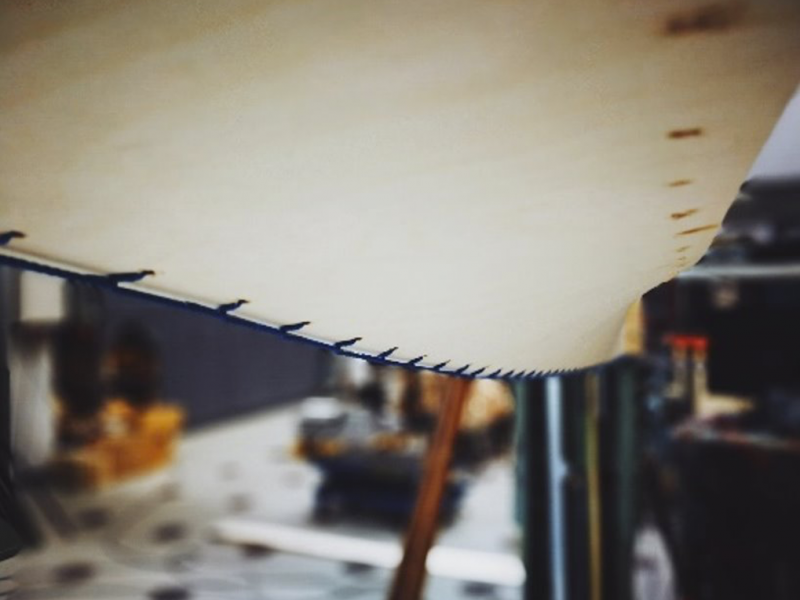
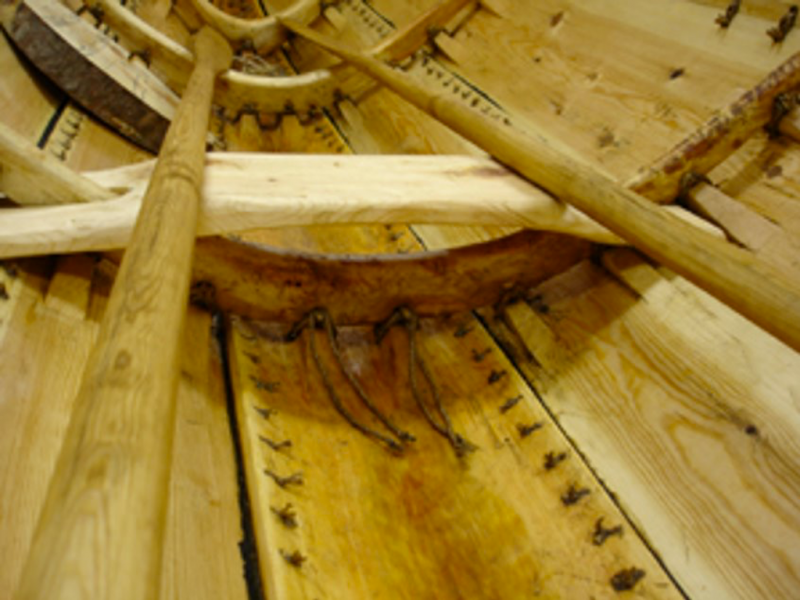
Figure 1: (a) The lacing and the curvature detail from the beam prototype consist of four flexible strips, (b) The stitches detail from the HALSNØY boat, image reference: Sewn boat – Wikipedia
Digitization has been a part of our lives from many aspects which induces a continuous evolution. Specifically, in our field such continuous change and developed digital tools have been blurring the borders between designer, engineer and maker (or builder) by aiming to bring together all components considering the whole lifecycle. But there are gaps between digital tools and the tacit knowledge behind the craftsmanship techniques. However, boiling down this gap to a competitive relation between high-tech and low-tech is not fully true. More than focusing on the potentials of digital tools as themselves and putting low-tech aside, we prefer to employ digital tools to create a framework. Reviewing traditional techniques from this framework could help us to reach more sustainable solutions through “creating more by using less” approach and ease of fabrication through eliminating labor-intense and time-consuming building processes. We recognise that today knowledge is probably more valuable than the product. Can we afford losing knowledge or not using existing but tacit knowledge? If yes, how to further develop the tacit knowledge?
Scale, Aim & Goals
We are proposing a method and framing a self organising process by combining bending-active aspects (Lienhard, 2014) with torsion, which will result in a novel typology of lightweight structures. In particular, this research investigates the advantages of such typologies in conjunction with the geometric stiffening, the generation, and control of geometry itself, possible bi-stable equilibrium states through the introduction of torsion during the process of form-generation as well as fields of application in real, firstly demonstrated in the realized research pavilion “Zero Gravity” by the team of A”SA (Aalto University Structures and Architecture) in 2019 (Figure 2).
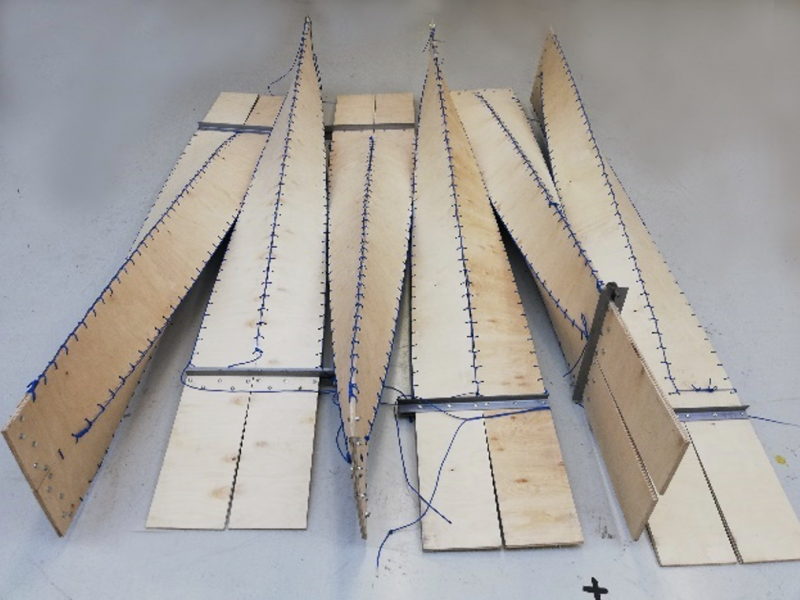
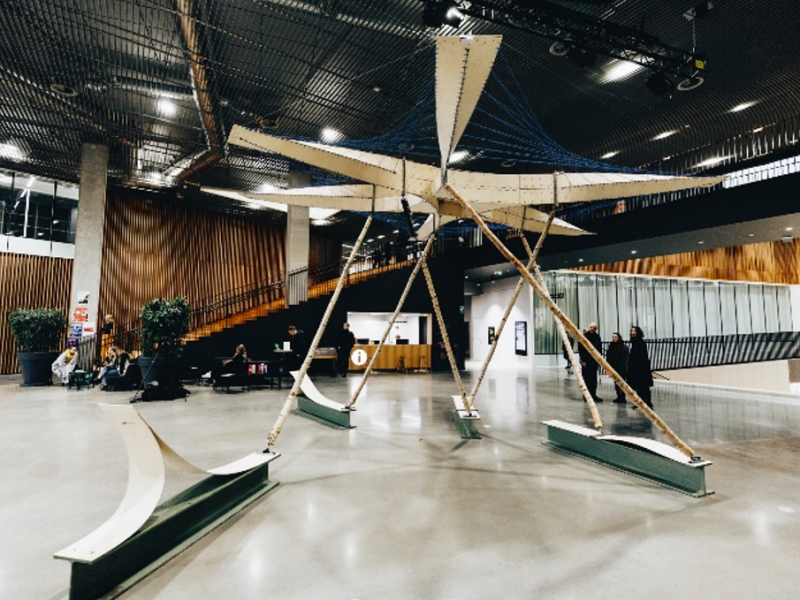
Figure 2: (a) Laced hollow beam elements from 4 torqued strips , (b) Zero Gravity research pavilion at Väre building, Aalto University, October 2019, Image Credit: Lassi Savola.
We aim to contribute to a more sustainable built environment by investigating new structural morphologies in lightweight structures. Smart geometries, such as those generated through elastic torsion and twist by simultaneously activating and utilizing material properties, can contribute to achieve highly efficient structures and usually ensure less material and energy consumption.
Methodology & Digital Tools
The methodology for this study includes a literature review and both computational and physical approaches. Multidisciplinarity and parametric design thinking have a crucial role in addressing and solving the questions. Since our way of using elastic torsion results in large deformations and non-Euclidean geometries, we have been dealing with geometric nonlinearities.
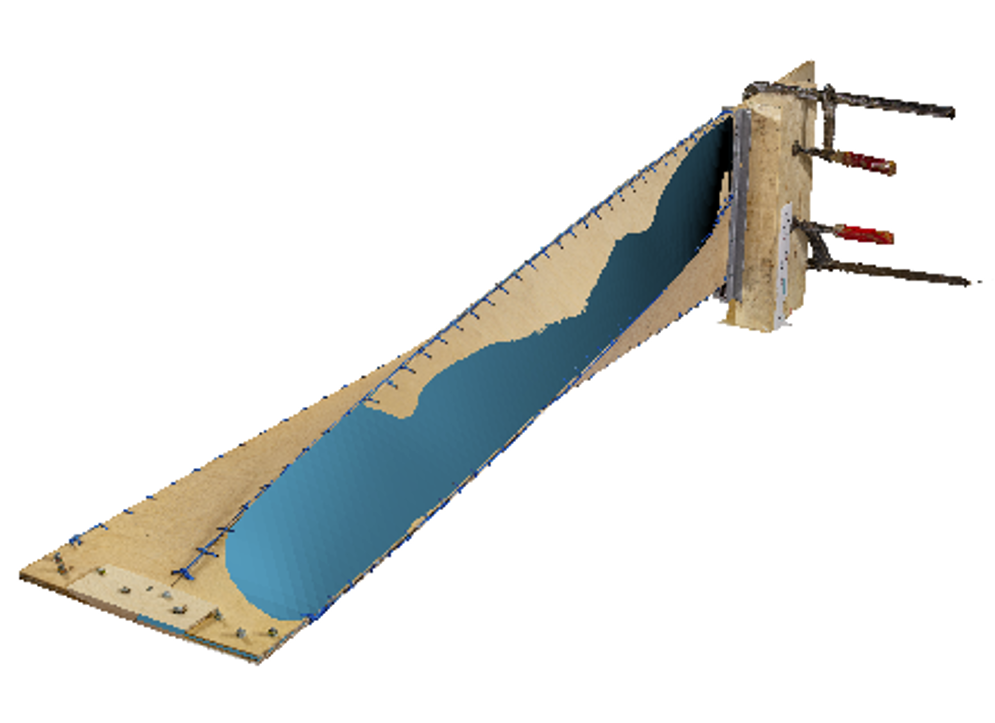

Figure 3: Photogrammetric reconstruction of the beam element compared with the mesh from the computational simulation
Outcomes, Discussion and Future Vision
As our preliminary results indicate, there are cases where thinner material will increasingly activate the geometrical stiffness and especially the FvK-effect due to its torque-related geometry. Possible outcomes of this research would be in different scales from a unit of a structure to a whole structure through wokring with a wide variety of marterial. By the use of linear and planar shapes and formats, which can be easily provided by today ́s industry, the results of this research will benefit from the ease of ready-made material and our novel way of combining its properties (elasticity) with smart geometry (bending-active torsion). Our results will have an impact on different levels from computational tools to material technology to structural and architectural systems to constructability and assembly processes.
Reference
Lienhard, J. (2014). Bending-active structures. Form-Finding Strategies Using Elastic Deformation in Static and Kenetic Systems and the Structural Potentials Therein. ITKE, Stuttgard.
Related Publications
Filz, G. H., Elmas, S., Markou, A. A., Hölttä-Otto, K., & Deo, S. (2021, August). Zero Gravity: radical creativity by multidisciplinary collaboration. In Proceedings of IASS Annual Symposia. International Association for Shell and Spatial Structures (IASS), Surrey, UK.
Elmas, S., Filz, G. H., Markou, A. A., & Romanoff, J. (2021, August). Zero Gravity: a novel cantilever beam utilizing elastic torsion for structures and architecture. In Proceedings of IASS Annual Symposia. International Association for Shell and Spatial Structures (IASS), Surrey, UK.
Markou, A. A., Elmas, S., & Filz, G. H. (2021). Revisiting Stewart–Gough platform applications: A kinematic pavilion. Engineering Structures, 249, 113304.
Zero Gravity 2.0 Exhibition | Aalto University
Please find more information about the published papers by using the link below.
